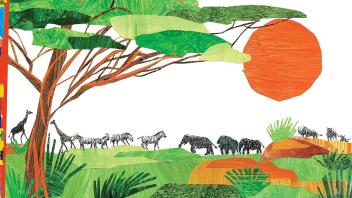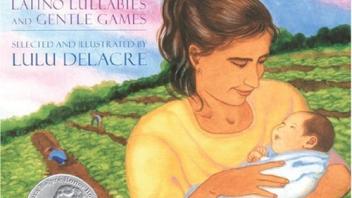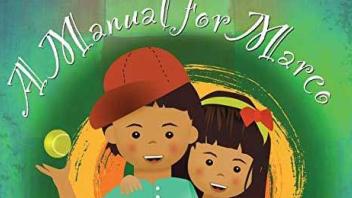Well, The Storyteller’s Candle/La Velita de los Cuentos, it’s a beautiful book. And I really, you know, I talk about these books like my children because they are. But this is a very special book. I think it’s
it’s a book that tells a story about another Puerto Rican, Pura Belpre, a librarian, the first Puerto Rican and Latina librarian in the public libraries of New York who was called upon when back in the 1930s during the recession, there was a wave of migration from Puerto Rico of a lot of Puerto Ricans looking for jobs and came to establish themselves in what we call today Spanish Harlem, el barrio.
And Pura Belpre was called upon to see how she could
what could she do to bring these
these new immigrants into the library. These immigrants came with the ideas that the libraries, well, the libraries were not for children. And in the libraries of New York, how could they find books in Spanish, en Español?
So they never dare go inside. It is a beautiful story that I knew not as much as to, you know, initially until I read all the research that Lucia Gonzalez, the author of the book, made. Lucia and I are very good friends. And Lucia herself is a librarian, a public librarian, a puppeteer, a storyteller, and, of course, an author, very much in the same way that Pura was.
And we get along very well. And when she told me that she wanted me to illustrate this book, I thought it was
it’s a marvelous combination. And I
the first thing that I did in term of research was actually travel to Miami, meet with her, talk to her. Through her, I read everything that she had read because she had kept everything.
And then, of course, the research. I needed to know about Pura before starting to illustrate the book for Lucia, but also then I went a step beyond. Then I needed to know how to put the illustrations of the book in the
in its historical context. And this is really the very first picture book that I do that is historical fiction.
And so
so in those terms, I really spent a lot of time trying to figure this out. I mean, of course, the very obvious things are to draw the cars of the time, to draw the buildings of the times, you know, the clothing that the people were wearing. That’s obvious.
But what else can you do? How can you put
how can you go beyond what it’s the obvious? So one of the things that I did is to really
one of the things that I did in order to research for the pictures themselves was to go to the library of
to the New York Public Digital Library.
And the New York Public Digital Library I found amazing pictorial material, photos, of those times. And using those photos, that helped me, you know, draw the things the way that they used to be that back them including the building of the 115th Street branch of the New York Public Library.
But also, you know, one
these photos influence me in the way that I decided to start all of the illustrations in sepia. Every single picture in that book started entirely in sepia tones. And the values were all done in sepia. And then I started layering the colors.
But there was one thing
one other thing that I added. And this is, again, a first for me. With each
each book that I illustrate, I actually let the manuscript talk to me and tell me what is it that the illustrations should be. And in this book it was the same.
I kept thinking that there was something else that I could do for this manuscript in order to put it in that historical context. And that’s when I said well how about
how if the illustration could
could enlarge what the text says? In other forms that just simply with a drawing, how about if we
if the reader could know what was going on at the same time that this story takes place. How do I do that?
And that’s when I got the idea of doing collage. But collage using The New York Times of the 6th of January of 1930 which I got through the Internet. There are now outfits in the Internet that sell these
these old issues.
And when I got that newspaper, and I opened the package where it came, and I flipped through very brittle and yellow pages, I found treasures. Treasures because all of a sudden in that illustration where I have Hildamar and Santiago, the main characters of the book, walking through the street reminiscing about the time that they came in the summer that they came and they left the island of Puerto Rico, And they came in this boat, in this steamboat, I found that for that illustration, I could actually place the sidewalk
the sidewalk was gonna be the list of the steamships that arrived on the 6th of January of 1930 coming a list that says “Porto Rico” because it wasn’t Puerto Rico back then. It was spelled “Porto Rico.” And, you know, from San Lorenzo and from San Juan, there were steamships coming.
So I said this is
and for, you know, that’s one example. For every single illustration, I found a piece, an article, something that could add another dimension to that picture. Almost like treasures that the careful reader will find perhaps in a second or third reading.

























